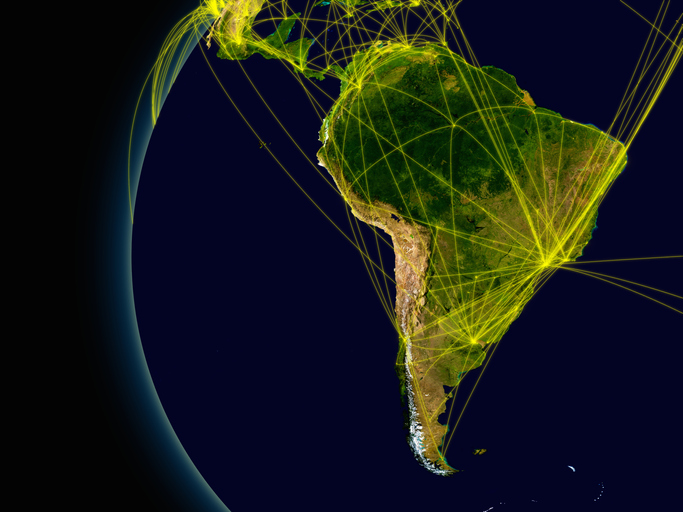In the first six months of 2019, the Brazilian government transformed 311 public services and made them 100% digital
Written by Luis Felipe Monteiro*

These services — such as applying for retirement and for an International Vaccination Certificate — previously required citizens to travel to a government office and fill out the necessary paperwork in person, but are now freely available to all Brazilians online.
The Brazilian government has already digitised three times as many public services in the first six months of 2019 as we did in all of 2018.
This transformation, however, did not happen overnight, nor is it due to one isolated effort.
The size of Brazil, with an area of 8.5 million km² and more than 210 million inhabitants, 130 million frequent internet users, distributed in 5.5 thousand municipalities, is a great challenge for everything the government does.
Partly because of the huge size of Brazil, the government has identified digital transformation as a powerful tool for the state to effectively reach its citizens, delivering efficient, quality services, and eliminating the time and money citizens must spend to travel across such a vast territory to reach their government.
All journeys start with small steps
Brazil’s journey towards a mature digital transformation started in 2016 with the publication of the Digital Governance Policy and Strategy. This strategy laid out the road map guiding all initiatives among all the different silos of the federal executive branch.
In 2017, digital government platforms were developed, and the Secretariat of Digital Government (formerly the Secretariat of Information Technology and Communications) was transformed from an entity that only made recommendations to other government agencies and began to offer centralised services, such as building blocks and tools that accelerate the digital transformation.
We knew that our bottlenecks were not technological but mainly revolved around the lack of digital leadership, engagement and coordination of senior leaders in the transformation process. Some leaders lacked a digital mindset or hadn’t yet realised the advantages of going digital, but that’s not a good reason to hold off from going down this path.
The new strategy, which sought to mitigate these issues, was executed, tested and refined during 2018 when we published the first Brazilian Digital Transformation Strategy.
This strategy provided another framework for our efforts, and as a result, we were able to digitise the first 109 services.
At the end of last year, while we were in the process of transitioning to the new administration following the October 2018 national elections, the first results of these deliveries were presented, as well as the potential for future economic and social gains.
Scaling digital
Not only did the new political leadership ensure the continuity of the teams and the project, but they decided it should be a top priority for the new government.
As a result, the Secretariat of Digital Government was formed as a dedicated group under the Ministry of Economy, focused exclusively on the implementation of the digital transformation projects.
This group works closely with another newly formed taskforce, the Special Secretariat of State Modernisation, linked to the General Secretariat of the Presidency, which focuses on the articulation, monitoring and strategic communication of the digital portfolio.
To scale up these preliminary results, it was essential to create a digital transformation plan to focus on the commitments and monitoring of many decentralised digital transformation initiatives.
One of the outcomes of this plan is a new performance dashboard, freely available to both government officials and citizens, that is updated every week, and which shows the evolution of digital transformation and points to areas in need of special attention.
Every project stopper that is difficult to solve at the operational level is directed upwards to the Minister of the responsible body to resolve it.
New year, new goals
The new government has announced four key goals to be achieved by the end of 2020.
Firstly, we aim to launch a new digital identity, based on biometrics data collected for over 100 million Brazilians. The second goal is to digitise at least 1.000 more public services, ensuring that 70% of the over 3.000 services catalogued are digital.
Our biggest challenge now is to recover the time lost before we started on the path towards Brazil’s digital future
We are well on our way: There are currently 1.500 digital services in Brazil, but already by the end of next year we aim to have more than 2300 services digitised.
Thirdly, we are working to consolidate government digital channels, which in the future will be gathered on one single portal — gov.br — which is set to launch in August 2019.
Last, but not least, we aim to simplify business registration to improve Brazil’s business environment and our position in the World Bank’s Doing Business ranking, where Brazil is currently ranked 109 among 190 surveyed countries.
Time is money
Brazil is currently facing a severe fiscal crisis with rising unemployment and is currently undergoing many structural reforms.
The digital transformation of public services is often highlighted by President Bolsonaro and his ministers as one of the ways to provide a better quality of life for the population.
Whether it’s facilitating access to services and reducing costs, improving the business environment for investing and creating businesses that will create jobs, or even reducing government operating costs.
We work hard to spend less on bureaucracy and instead invest more in important public policies in areas such as education, health and public safety.
With 311 services already digitised this year, the estimated annual savings are $49 million USD for the government and $162 million USD for the population — which translates to more than 10 million hours saved for users of these public services!
The business case for the digital transformation project focuses on saving resources, effort and time, and has provided compelling arguments to convince senior government leaders of the benefits of digital transformation.
We have been able to bring together a dedicated team of senior managers and experts with experience and accumulated knowledge to produce quality digital government at the speed Brazil needs.
Our biggest challenge now is to recover the time lost before we started on the path towards Brazil’s digital future, and create a new public service based on the culture of user experience, always putting the citizen at the centre of our actions.— Luis Felipe Monteiro
*Luis Felipe Monteiro, Secretary of Digital Government in Brazil
Fonte: A Political
Ransomware suspected in cyberattack that crippled major US newspapers
Malicious URL attacks using HTTPS surge across the enterprise






























